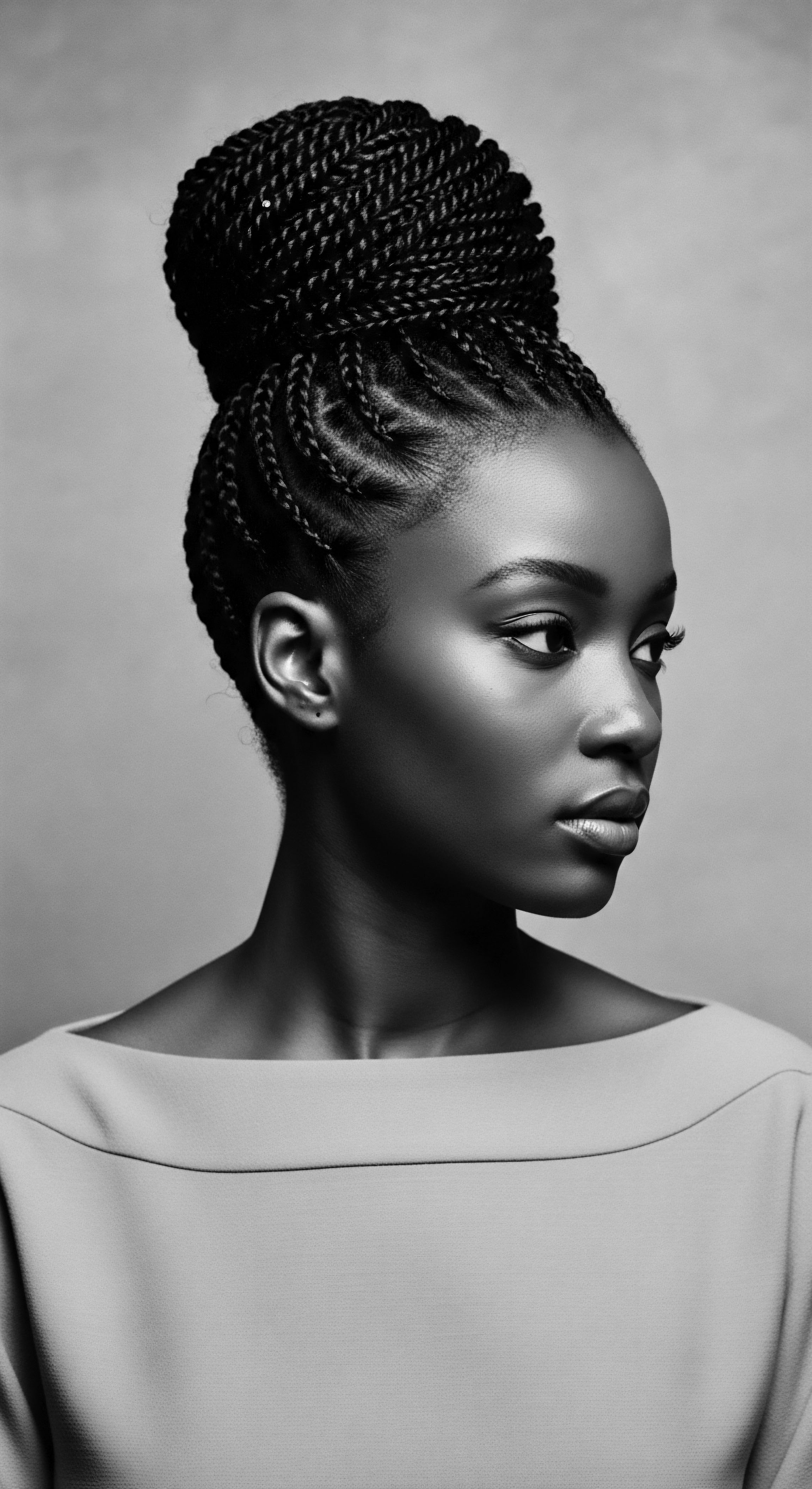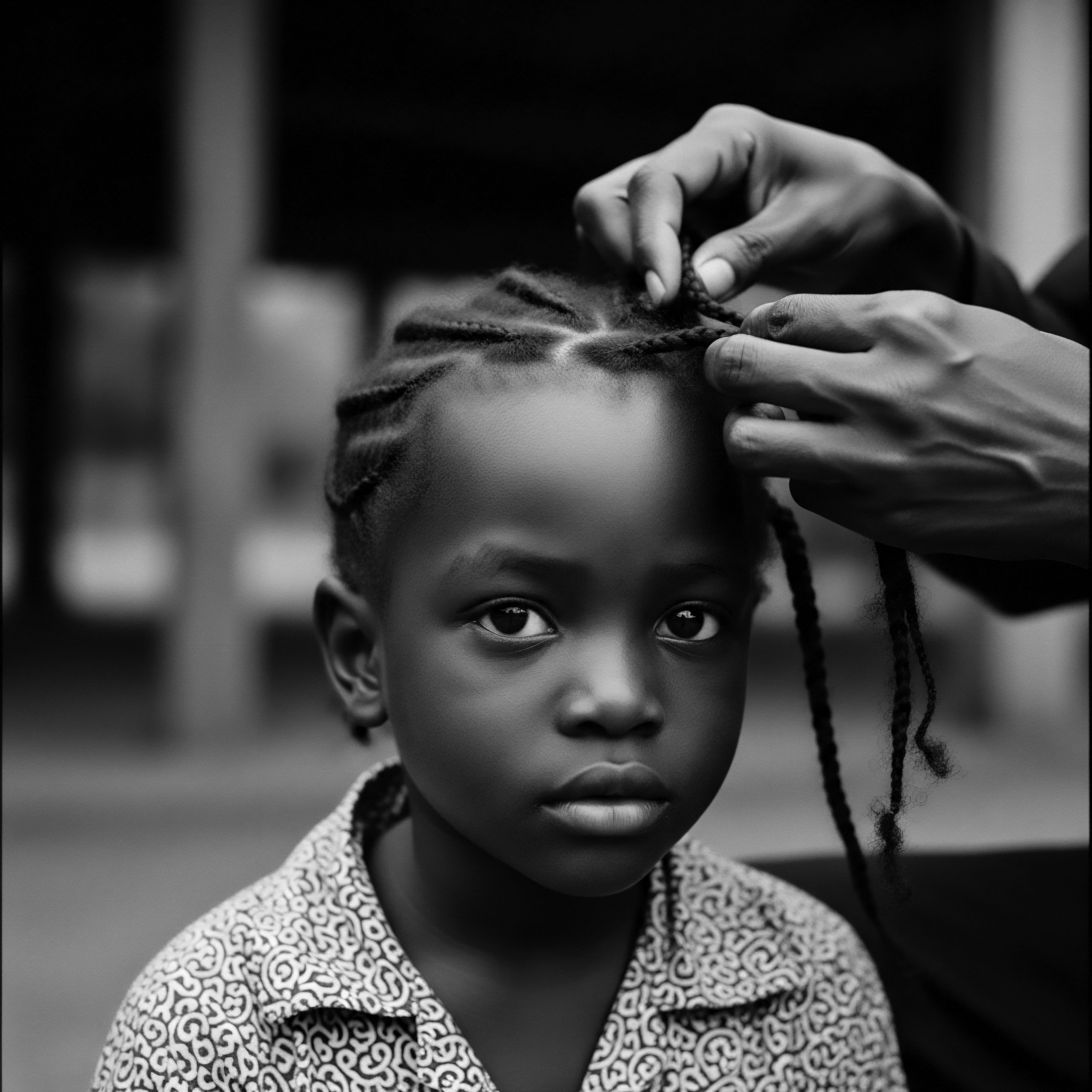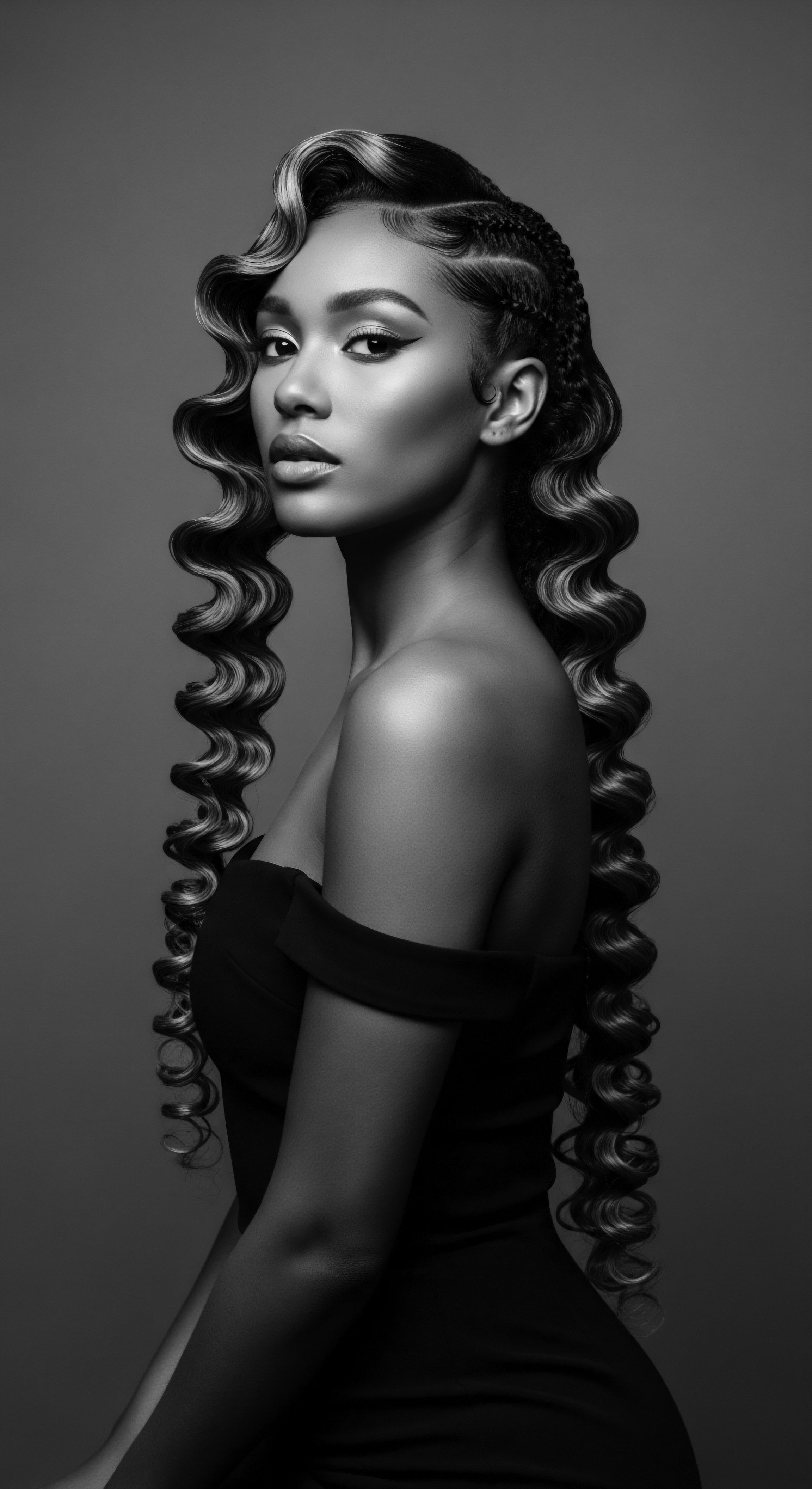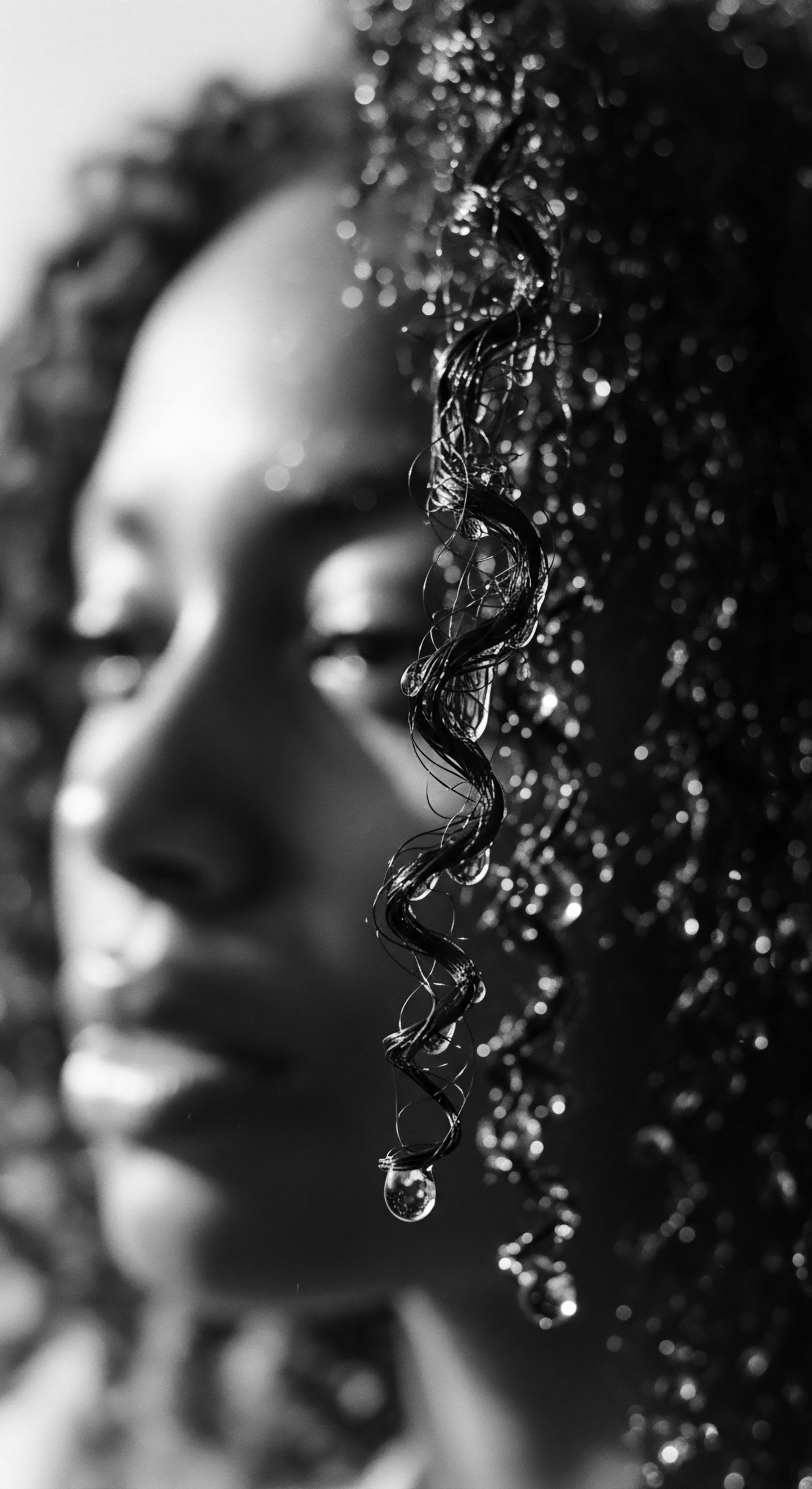
Roots
There exists a profound memory within each coil, every wave, and every strand of textured hair—a memory of resilience, of ancestral wisdom, and of intimate connection to the earth’s bounty. For those whose hair patterns speak of ancient lineages and diverse histories, the journey of care is far from a mere cosmetic routine. It is a dialogue with the past, a practice of honoring what has been passed down through generations. Within the lush, breathing expanse of the Amazon rainforest, a true guardian of this heritage stands tall ❉ the Pataua Palm, Oenocarpus bataua.
This majestic tree offers an oil, a liquid legacy, that has fortified and honored textured hair for centuries, long before modern science began to unravel its chemical signatures. It is a whisper from the heart of the Amazon, a testament to enduring ancestral knowledge and a beacon for contemporary textured hair care.

The Architecture of Textured Hair
To comprehend the deep work of Pataua oil, one must first grasp the inherent architecture of textured hair itself. Unlike its straighter counterparts, textured hair, particularly that of African and mixed-race descent, emerges from a distinctly elliptical follicle. This shape causes the hair strand to grow in a curvilinear path, forming curls, coils, and kinks. Each bend and twist, while beautiful, creates natural points of vulnerability along the hair shaft.
These structural nuances contribute to its characteristic dryness, as natural oils from the scalp struggle to navigate the intricate path down the coiled strand. This dry, often more fragile nature makes textured hair particularly susceptible to mechanical stress, such as that from combing or styling. A compelling 2005 multiethnic study by L’Oréal Institute for hair and skin research reported that a large percentage (96%) of African-American respondents experience breakage, with African-textured hair breaking roughly ten times faster than straighter Caucasian hair under combing or brushing stress (Camacho-Bragado et al. 2016; M.
M. I. de Castro et al. 2020). Such findings underscore the historical and ongoing challenge of maintaining the integrity of textured hair, and they highlight the vital role of fortifying agents, like Pataua oil, in preserving its strength.

What is the Ancestral Understanding of Hair Vitality?
For indigenous communities of the Amazon, and indeed for many cultures across the Black diaspora, hair has always held a significance beyond mere aesthetics. It has been a symbol of status, identity, spiritual connection, and collective heritage. Hair care practices were rituals, informed by generations of observational knowledge of natural resources. The very act of applying oils and concoctions was a communal expression, often woven into daily life and rites of passage.
The knowledge of which plants offered strength, moisture, or sheen was not written in textbooks but passed through touch, through song, and through the shared experience of tending to one another’s crowns. The resilience of textured hair, often seen through a colonial lens as ‘difficult’ or ‘unruly,’ was, within these ancestral contexts, understood as an inherent strength, a characteristic to be nurtured with the wisdom of the earth. The Pataua palm, for instance, was observed to yield a fruit whose oil imparted vitality, a natural tonic against loss, and a source of luster, observations now validated by contemporary scientific inquiry.

The Lifeblood of the Pataua Palm
Pataua oil, derived from the mesocarp of the Oenocarpus bataua palm fruit, presents as a greenish-yellow or transparent liquid, possessing a mild aroma. Its chemical composition bears a striking resemblance to olive oil, particularly in its high content of unsaturated fatty acids. This is where its fortifying power for textured hair begins to reveal itself, linking ancestral application to modern understanding of molecular benefit. The oil is a rich source of oleic acid, also known as Omega 9, a monounsaturated fatty acid that constitutes a significant portion of its makeup, sometimes as high as 74-82%.
Oleic acid is a powerful emollient, known for its ability to prevent moisture loss, deeply hydrate, and improve the hair’s texture. This fatty acid allows the oil to penetrate the hair shaft effectively, nourishing from within and restoring a natural sheen without leaving a heavy, greasy residue.
Pataua oil, historically revered by Amazonian communities for its hair-fortifying attributes, is scientifically validated by its rich composition of essential fatty acids and antioxidants.
Beyond oleic acid, Pataua oil also contains linoleic acid (Omega 6), a polyunsaturated fatty acid, and palmitic acid. Linoleic acid is an essential fatty acid, meaning the body does not produce it naturally, and it plays a role in reducing hair loss and promoting scalp health. Palmitic acid contributes to the skin’s barrier function, supporting a healthy scalp environment which is foundational for strong hair growth. The presence of these fatty acids aids in the production of natural scalp oils, which coat and nourish hair strands, truly bringing hair back to life.

The Antioxidant Shield of Pataua Oil
Pataua oil’s fortifying abilities extend beyond its fatty acid profile to its remarkable antioxidant content. It is particularly rich in alpha-tocopherol, a potent form of Vitamin E. This vitamin is a powerful antioxidant that combats oxidative stress, protecting hair follicle cells from damage caused by environmental aggressors like UV radiation. Oxidative stress can contribute to hair loss, so the presence of Vitamin E supports hair growth and overall scalp wellness.
Beyond Vitamin E, Pataua oil also contains phytosterols, such as beta-sitosterol, which are compounds with a structure akin to cholesterol. These phytosterols can strengthen hair follicles, reducing breakage and promoting healthier hair growth. This scientific understanding explains the traditional efficacy observed by indigenous communities who utilized this oil not only for its cosmetic benefits but also as a tonic to address concerns like hair loss. The integration of these compounds within the oil provides a comprehensive approach to hair fortification, echoing the holistic ancestral approaches to health and beauty.

Ritual
The application of oils to textured hair has long been a ritual, a tender act passed through hands that remember generations of care. Pataua oil, with its unique properties, found its place in these traditions, not merely as a product, but as an active participant in the heritage of hair styling and maintenance. From the meticulously crafted braids of West Africa, which found new expressions in the Americas, to the intricate coiffures of indigenous Amazonian tribes, the careful preparation and adornment of hair has consistently served as a powerful statement of identity, community, and resilience.

Styling Through the Ages
Traditional styling practices for textured hair were deeply intertwined with protective measures, born from a necessity to preserve hair integrity in diverse climates and daily activities. Pataua oil, known to indigenous communities as a hair tonic and dressing, played a significant role in these practices. Its ability to moisturize and strengthen hair would have been invaluable in preparing strands for braiding, twisting, or coiling, reducing friction and minimizing damage during manipulation. The oil’s light texture ensures it absorbs quickly, making it a suitable choice for intricate styles without weighing the hair down.
- Pre-Braiding Treatment ❉ Before braiding or twisting, Pataua oil could be warmed slightly and massaged into sections of hair, providing a nourishing base that helps in easier manipulation and reduces breakage during the styling process.
- Scalp Invigoration ❉ Applying Pataua oil directly to the scalp, particularly when hair is in protective styles, supports a healthy environment for growth, helping to alleviate dryness or irritation. Indigenous communities often used it as a tonic to combat hair loss and soothe the scalp.
- Luster and Definition ❉ A small amount of Pataua oil smoothed over finished styles would have provided a natural sheen, enhancing the definition of coils and curls, a subtle adornment that spoke of natural health. This echoes modern applications that aim to smooth frizz and add shine.

How Did Amazonian Communities Utilize Pataua Oil in Daily Hair Practices?
The usage of Pataua oil within indigenous Amazonian communities is deeply rooted in their daily lives and cultural narratives. Traditionally, the oil was extracted through methods that honored the plant, often involving soaking the fruits in water, then shredding the pulp and boiling it until the oil separated and rose to the surface. This process, passed down through generations, yielded a potent elixir used for multiple purposes. For hair, it served as a means to maintain healthy hair growth and add luster, often applied regularly to the scalp and strands as a protective measure against environmental elements and to support hair strength.
This demonstrates a holistic understanding of care, where internal wellness and external presentation are intertwined, a tradition that continues to influence modern natural hair movements. The practices were not isolated acts of beauty but were part of a broader ethnobotanical knowledge system, where plants served as food, medicine, and material for everyday living.

The Intertwined Path of Heritage and Innovation in Hair Tools
The tools employed in traditional hair care were often extensions of the natural environment, crafted from wood, bone, or natural fibers. These tools, used with a gentle, mindful approach, complemented the nourishing properties of oils like Pataua. The smooth glide of a handcrafted wooden comb, saturated with oil, would have distributed the precious liquid through textured strands, minimizing snagging and breakage. Today, while modern brushes and combs are prevalent, the philosophy of gentle manipulation and mindful application, learned from ancestral practices, remains vital.
The effectiveness of Pataua oil in reducing frizz and enhancing manageability means that even with modern tools like blow-dryers, it can provide a protective layer, mitigating potential damage from heat. The enduring principle is that the tool serves the hair, not the other way around, a wisdom deeply embedded in heritage practices.
Traditional hair care, deeply informed by ancestral wisdom, viewed oils like Pataua as integral to protective styling and maintaining textured hair’s strength and luster.
| Aspect of Use Hair Strengthening |
| Traditional Application (Heritage) Used as a tonic for hair loss, applied to scalp and strands to promote overall vitality. |
| Modern Application (Science-Informed) Incorporated into formulations to strengthen hair fibers, reduce breakage, and prevent split ends due to fatty acids and phytosterols. |
| Aspect of Use Moisture and Hydration |
| Traditional Application (Heritage) Applied as a hair dressing to maintain moisture, especially in humid Amazonian climates. |
| Modern Application (Science-Informed) Utilized for its high oleic acid content to deeply hydrate dry textured hair, sealing moisture and improving manageability. |
| Aspect of Use Scalp Health |
| Traditional Application (Heritage) Rubbed onto the scalp to alleviate dryness and discomfort, supporting a healthy environment for hair growth. |
| Modern Application (Science-Informed) Benefits from Vitamin E and Omega 9 stimulating blood circulation, protecting against oxidative stress, and reducing flakiness. |
| Aspect of Use Styling Aid |
| Traditional Application (Heritage) Used to prepare hair for traditional styles, adding natural sheen and aiding in manageability. |
| Modern Application (Science-Informed) Applied to smooth frizz, add shine, and provide thermal protection during heat styling, absorbing quickly without residue. |
| Aspect of Use Pataua oil stands as a testament to the enduring wisdom of ancestral practices, its benefits now articulated through contemporary scientific understanding. |

Hair as a Living Archive of Identity
The hair of Black and mixed-race individuals carries a profound weight of heritage, often serving as a visible marker of identity, resistance, and connection to ancestral roots. Throughout history, oppressive systems have sought to control or diminish the inherent beauty of textured hair, forcing conformity or promoting practices that cause harm. However, within communities, the care and styling of hair have always been acts of reclamation and celebration.
The choice to wear natural textures, to adorn them with oils and patterns passed down, becomes a statement of self-acceptance and a powerful link to a legacy of beauty that could not be extinguished. Pataua oil, a gift from the Amazon, therefore stands as a tangible link to this heritage, representing not only a natural fortifier for the hair but also a symbol of cultural pride and the unwavering spirit of those who have sustained these traditions against formidable odds.

Relay
The deep knowledge embedded in ancestral practices, particularly concerning textured hair, provides a framework for modern holistic care. The wisdom of those who came before us, intimately connected to the earth’s rhythm and its offerings, guides us toward a deeper understanding of true hair vitality. Pataua oil, with its centuries of documented use among indigenous Amazonian communities, embodies this profound connection, offering tangible benefits that align seamlessly with both traditional wellness philosophies and contemporary scientific findings.

Building Care Pathways from Ancient Roots
Creating a truly nourishing hair regimen for textured hair involves more than just applying products; it requires an attuned ear to the whispers of ancestral wisdom and an understanding of hair’s inherent needs. Pataua oil, harvested from the resilient palms of the Amazon, has historically been a cornerstone of hair care for its ability to strengthen and moisturize. Its rich composition of fatty acids—predominantly oleic acid (Omega 9), but also linoleic (Omega 6) and palmitic acids—provides a multi-pronged approach to fortification. Oleic acid, the primary fatty acid, is celebrated for its deep moisturizing properties, actively sealing moisture within the hair shaft and preventing the common concern of dryness that often affects textured strands.
This mirrors the way ancient practices sought to keep hair supple and resistant to environmental stressors. Linoleic acid, an essential fatty acid, contributes to scalp health and has been linked to reducing hair loss and increasing hair density. The presence of Vitamin E, a potent antioxidant, further protects hair from damage and stimulates blood circulation in the scalp, laying a strong foundation for healthy growth. These components, understood intuitively by ancestral caretakers, now have their efficacy validated by molecular biology, bridging the gap between tradition and modern science.
Consider the consistent fragility of textured hair, a characteristic that makes it vulnerable to breakage, especially when wet or subjected to frequent manipulation (Camacho-Bragado et al. 2016). The fortifying properties of Pataua oil directly address this vulnerability. Its ability to coat the hair with a protective layer not only tames frizz and adds shine but also shields strands from environmental damage and the rigors of styling, including heat exposure.
Applying it as a pre-shampoo treatment, a leave-in conditioner, or a sealing oil can significantly enhance the hair’s resilience. The ease with which Pataua oil absorbs means it can be a part of a gentle yet effective routine, providing benefits without residue.

The Nighttime Sanctuary ❉ Preserving Textured Hair Heritage
The practice of protecting hair at night, often through wrapping or covering, is a deeply rooted tradition across many Black and mixed-race cultures, a testament to inherited wisdom about hair longevity and health. Bonnets, scarves, and silk pillowcases are not simply accessories; they are tools of preservation, guarding delicate textured strands against friction, moisture loss, and tangling during sleep. This nighttime sanctuary is where the true work of hair care often occurs, preparing strands for the next day. Pataua oil can play a significant role here, working in concert with these protective covers.
A light application before wrapping the hair allows its fortifying components to work overnight, ensuring that strands remain moisturized and supple. Its properties help to restore damaged ends, reduce split ends, and enhance overall hair thickness. This ritual, sustained through generations, ensures that the efforts of daily care are not undone by the subtle abrasions of rest, truly honoring the hair’s heritage by nurturing its physical well-being.
Beyond the direct application to hair, the holistic influences on hair health run deep within ancestral wellness philosophies. Diet, emotional well-being, and a spiritual connection to one’s physical form all contribute to the vibrancy of hair. Indigenous communities understood that true health emanated from a balanced existence, interwoven with the natural world.
Pataua, consumed as a nourishing “wine” or incorporated into foods, contributes not only externally but internally. This comprehensive approach to vitality—where the plant nourishes the body from within and fortifies the hair from without—echoes the wisdom that hair is not separate from the self but an extension of one’s holistic being, a living crown connecting us to our ancestors and the earth.
- Internal Nourishment ❉ The consumption of the Pataua fruit, either in its raw form or as a traditional beverage, offers internal benefits due to its high protein content and amino acid composition, comparable to meat or milk. This internal fortification complements external application, supporting hair health from the cellular level.
- Mindful Application ❉ The act of applying Pataua oil, much like any traditional remedy, invites a moment of mindfulness, turning a routine task into a calming ritual. This intentionality, a quiet communion with the self and ancestral practices, contributes to overall well-being, which in turn reflects in hair vitality.
- Environmental Respect ❉ The sustainable harvesting of Pataua oil, often wildcrafted by local communities, embodies a deep respect for the environment. Choosing products that honor these practices connects us to a larger heritage of ecological stewardship, recognizing that our beauty is intricately linked to the health of the planet.

Addressing Textured Hair Concerns with Ancestral Wisdom
Textured hair can encounter specific challenges, from persistent dryness and breakage to scalp sensitivities. For many, these concerns are not just physical but also carry historical weight, reflecting a legacy where textured hair was often misunderstood or neglected. Pataua oil offers a time-honored solution, rooted in centuries of use within cultures that deeply understood these hair types. Its ability to prevent moisture loss and its anti-inflammatory properties contribute to a healthier scalp, mitigating issues like dryness and flakiness.
Furthermore, Pataua oil has been shown to improve blood circulation to the scalp, which supports nutrient absorption by hair follicles and can aid in reducing hair loss and accelerating growth. This scientific corroboration of ancestral remedies speaks to the enduring efficacy of natural ingredients. The understanding that the hair’s health is a reflection of overall wellness, as long taught in traditional healing systems, positions Pataua oil as more than a topical treatment. It functions as a component of a comprehensive approach to hair care that respects its inherent structure and its rich, complex heritage.

Reflection
The journey into Pataua oil, this golden elixir from the Amazon, is far more than a simple inquiry into a botanical ingredient; it is an excavation of memory, a homecoming to the profound intelligence held within textured hair and its heritage. We have walked through the deep roots of its anatomy, understanding how the very structure of coils and kinks, often perceived as fragile, is intrinsically supported by the molecular embrace of Pataua oil’s fatty acids and antioxidants. We have witnessed the gentle rhythm of ritual, where hands steeped in ancestral wisdom transformed simple application into a sacred act of care, weaving strength and identity into each strand. And we have considered the relay of this knowledge, from the ancient riverside communities to contemporary practices, connecting timeless traditions with modern understanding.
The ‘Soul of a Strand’ whispers of this unbroken lineage. It reminds us that every fiber of textured hair carries the echoes of survival, the resilience of generations who preserved their beauty, their traditions, and their very selves against currents of erasure. Pataua oil, then, is not merely a fortifier; it is a living symbol of this legacy. It speaks to the ingenuity of indigenous peoples who, through intimate observation and deep respect for their environment, uncovered the very essences that would sustain their crowns.
For the myriad expressions of Black and mixed-race hair around the globe, this Amazonian oil offers a tangible link to a heritage of self-possession and enduring beauty. Its continued use today honors these ancestral practices, recognizing that the most potent solutions often lie in the earth itself, in the wisdom passed down, waiting to be rediscovered and celebrated.
As we move forward, may our engagement with textured hair care be a continuous act of remembrance and reverence. May the story of Pataua oil serve as a beacon, guiding us to recognize the profound value in ancestral knowledge, to support sustainable practices that honor both the earth and its diverse peoples, and to celebrate the rich, vibrant heritage that is truly etched into every unique strand.

References
- BALICK, M.J. (1988). Jessenia and Oenocarpus ❉ neotropical oil plants worthy of domestication. Food and Agriculture Organization (FAO), Plant Production and Protection Paper, N° 88. Rome.
- Camacho-Bragado, G.A. et al. (2016). Understanding breakage in curly hair. Journal of Cosmetic Science.
- de Castro, M. M. I. et al. (2020). Defying Damage ❉ Understanding Breakage in Afro-textured Hair. Cosmetics & Toiletries.
- Hidalgo, P.S.P. et al. (2016). Amazon oilseeds ❉ Chemistry and antioxidant. Journal of the American Oil Chemists’ Society.
- Martins, R. C. et al. (2011). Nutritional composition, fatty acid and tocopherol contents of buriti (Mauritia flexuosa) and patawa (Oenocarpus bataua) fruit pulp from the Amazon region. Ciencia e Tecnologia de Alimentos.
- Moraes, M. Sarmiento, J. & Oviedo, E. (1995). Richness and uses in a diverse palm site in Bolivia. Brittonia.
- Pesce, C. (1941). Oleaginosas da Amazônia. Oficinas Gráficas da Revista Veterinária, Belém/PA.
- Ribeiro, M. et al. (2017). Plant lipid composition for promoting hair growth, method for promoting hair growth and use of said plant lipids. WO2017112990A1.
- Shaney, P. et al. (2005). Frutíferas e plantas úteis na vida amazônica. CIFOR, IMAZON, Editora Supercores, Belém.
- Voeks, R. A. & Rashford, J. (Eds.). (2013). African Ethnobotany in the Americas. Springer New York.
